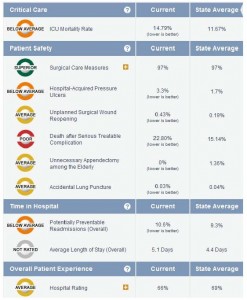Healthcare Report Cards for Public Reporting
Except for the students at the top of a class, nobody really enjoyed report card day—even when it was not a bad report card. There was always a speech about how you could do better if you just took time to apply yourself. Ouch!
Report cards are not generally associated with fun. Public reporting of hospital data at a state or national level is becoming more common and sophisticated in how they present the data to consumers of healthcare. In general, consumers of healthcare have been slow to use comparative performance reports in making healthcare choices.
Healthcare consumers select providers based on word-of-mouth, insurance networks, cost, doctor qualifications and access. Now in the age of hospital transparency, public reporting is being used in several ways by government and consumer entities including:
1) Assist consumers in making informed choices so they can obtain high quality healthcare for themselves and their families;
2) A collective effect motivating providers to improve services as a way to keep or boost market share;
3) Public reports, such as those published in newspapers or HealthGrades, affecting a provider’s public image in a way that encourages them to improve the quality of care they provide to protect their reputation.
Public reporting allows for data transparency that is critical for healthcare providers to benchmark themselves, as well as for consumers to make informed decisions about healthcare options. Although we have not been inundated with provider report cards in North Texas, it’s only a matter of time before the demand to provide sophisticated comparative reports becomes a requirement. The reference below is an example of reports the state of California provides on hospitals, payers, long-term care and medical groups.
References: http://www.ahrq.gov/qual/pubrptguide1.htm

http://www.ahrq.gov/qual/pubrptguide1.htm
